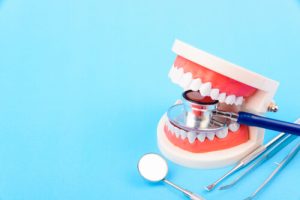Contents
- 1 Understanding Why Molars Break Off at the Gum Line
- 2 Immediate Steps to Take When Your Molar Breaks Off
- 3 Treatment Options for a Broken Molar at the Gum Line
- 4 The Role of Dental Surgery in Repairing Broken Molars
- 5 Preventing Further Damage to Adjacent Teeth and Gums
- 6 Maintaining Oral Health After Repairing a Broken Molar
- 7 References
If a molar breaks off at the gum line, it causes immediate discomfort and raises concerns about oral health and treatment options. Such dental emergencies can stem from various factors, including decay, injury, or wear and tear over time. This piece delves into the reasons behind such occurrences, the potential impact on your oral well-being, and the pathways to restoration and healing.
Navigating this unexpected situation requires prompt action and informed decisions, which ensure the preservation of your dental health and the prevention of further complications.
Understanding Why Molars Break Off at the Gum Line

Molars and broken teeth breaking off at the gum line can occur due to various factors affecting oral health significantly. Here are the detailed considerations:
Tooth Decay
The primary cause is untreated cavities compromise tooth integrity, making them prone to breakage.
Root Canal Failures
Infections post-root canal treatment can weaken the tooth, leading to potential breakage.
Physical Trauma
Incidents like sports injuries or biting down on hard substances can cause molars to snap off.
Teeth Grinding
A condition known as bruxism, where excessive force is applied to teeth, often leading to fractures.
Tooth Extraction
Sometimes, if the tooth cannot be salvaged, it is necessary to have subsequent dental implants or bridges as therapeutic options.
Preventive Measures
Regular dental check-ups, avoiding hard foods, and protective gear during sports can help mitigate the risk.
Immediate Steps to Take When Your Molar Breaks Off
When a molar breaks off at the gum line, immediate action is essential to prevent further damage and manage pain. Here are the steps to a dentist may follow:
Assess the Damage: Assess the break’s severity carefully. Try to preserve any fragments of the tooth if you can.
Rinse Your Mouth: Use warm water to clean the area gently, removing any debris and reducing the risk of infection.
Apply Cold Compress: To manage swelling and relieve pain, apply a cold compress on the cheek near the affected area.
Avoid Certain Foods: Steer clear of hard, sticky, or sugary foods that can exacerbate the problem or cause pain.
Take Pain Relievers: Pain relievers available without a prescription can reduce discomfort until a dental appointment is possible.
Contact Your Dentist Immediately: Schedule an emergency dental appointment. Quick professional evaluation and treatment are crucial.
Practice Good Oral Hygiene: Continue brushing and flossing carefully around the broken tooth to keep the area clean.
Treatment Options for a Broken Molar at the Gum Line

For a front tooth that has a broken molar at the gum line, treatment is essential for restoring function and alleviating pain. The selection of a treatment approach is based on the degree of damage and the general state of oral health:
Dental Crown: If enough tooth structure remains, a crown can cap and protect the tooth, restoring its shape and function.
Root Canal Therapy: If the break has exposed the tooth’s pulp or caused infection, root canal therapy may be necessary before capping the tooth with a crown.
Tooth Extraction: In cases where the tooth is too damaged to save, extraction may be the only option. Tooth replacement options can follow this.
Dental Implants: After extraction, a dental implant is a durable, functional replacement, acting as a new root to support a crown.
Partial Dentures or Bridges: A bridge or partial denture can replace the missing molar and restore chewing ability for those not suitable for implants.
Bone Grafting: Should the extraction result in considerable bone loss, bone grafting might be necessary prior to implant placement.
The Role of Dental Surgery in Repairing Broken Molars
Dental surgery is crucial in addressing the complex challenges of broken molars, especially when they break off at or below the gum line. It involves several procedures tailored to the severity of the break and the health of broken tooth fragments in the surrounding tissue:
Extraction: For molars that cannot be saved, surgical removal is often necessary to prevent infection and prepare for tooth replacement options.
Root Canal Therapy: This is required if the break has reached the tooth’s pulp. It involves removing the damaged tissue and sealing the tooth, possibly followed by a crown to protect the remaining structure.
Dental Implants: A preferred solution for replacing extracted molars. Implants provide a strong foundation for artificial teeth, closely mimicking natural tooth function.
Bone Grafting is essential if bone loss occurs around the broken molar, ensuring sufficient support for dental implants.
Crown Lengthening: In cases where the break leaves an insufficient tooth above the gum line for a crown, this surgery exposes more of the tooth to fit a new crown properly.
Gum Grafting: Addresses gum recession or damage around the broken molar to protect roots and reduce sensitivity.
Preventing Further Damage to Adjacent Teeth and Gums

Preventing further damage to adjacent teeth and gums after a tooth root or a molar breaks off at the gum line is critical for maintaining oral health and avoiding additional dental issues.
Regular Dental Checkups: Frequent visits to the dentist can help monitor the condition of teeth and gums, ensuring early detection and treatment of potential problems.
Proper Oral Hygiene: Brushing twice daily with fluoride toothpaste, flossing daily, and using an antiseptic mouthwash can reduce the risk of decay and gum disease.
Protective Measures: Wearing a mouthguard during sports or activities that could result in dental injury protects teeth from trauma.
Balanced Diet: Consuming a diet low in sugary foods and drinks and high in vitamins and minerals supports strong teeth and healthy gums.
Avoiding Hard Foods: Steering clear of foods that could crack or damage teeth helps prevent further issues.
Immediate Treatment: Seeking prompt dental care for any discomfort or abnormalities can prevent the spread of damage to surrounding areas.
Maintaining Oral Health After Repairing a Broken Molar

Maintaining oral health after repairing a broken molar is pivotal to ensuring the longevity of the repair and the overall well-being of the remaining tooth in your mouth.
- Follow Dentist’s Aftercare Instructions: Adhering strictly to the guidelines provided by your dentist post-treatment, such as avoiding certain foods or activities, is crucial for healing.
- Regular Oral Hygiene Routine: Twice-daily brushing with fluoride toothpaste, daily flossing, and mouthwash use are essential practices to prevent additional decay and complications.
- Routine Dental Checkups: Scheduling and keeping regular appointments with your dentist allows for ongoing monitoring and maintenance of dental health.
- Protective Measures: Using mouthguards during sports and avoiding habits like chewing on hard objects can protect the molar and surrounding teeth from additional damage.
- Dietary Considerations: Incorporating a balanced diet rich in calcium, vitamin D, and phosphate supports strong teeth and healthy gums.
- Immediate Reporting of Issues: Promptly reporting any discomfort, pain, or unusual symptoms to your dentist can catch potential problems early, preventing more serious complications.
When a molar or cracked teeth break off at the gum line, it signals prompt dental action to prevent further oral health complications. This guide has walked you through the critical steps from immediate care to long-term maintenance, ensuring you’re equipped with the knowledge to manage such dental emergencies effectively. Understanding the reasons behind such breakages, exploring treatment options, and adopting preventive measures can significantly contribute to oral health resilience. Remember, promptly consulting with a dental professional can save your smile and ensure that a broken molar becomes nothing more than a minor hiccup in your dental health journey.
References
What Should I Do About a Molar Broken Off at the Gum Line
https://www.healthline.com/health/molar-broken-off-at-the-gum-line
What to Do About a Broken Molar
https://www.byte.com/community/resources/article/broken-molar
Repairing a Chipped or Broken Tooth
https://www.webmd.com/oral-health/repairing-a-chipped-or-broken-tooth
Chipped, broken tooth broke or cracked tooth
https://www.nhs.uk/conditions/chipped-broken-or-cracked-tooth/
Fractured Tooth (Cracked Tooth): What It Is, Symptoms
https://my.clevelandclinic.org/health/diseases/21628-fractured-tooth-cracked-tooth

